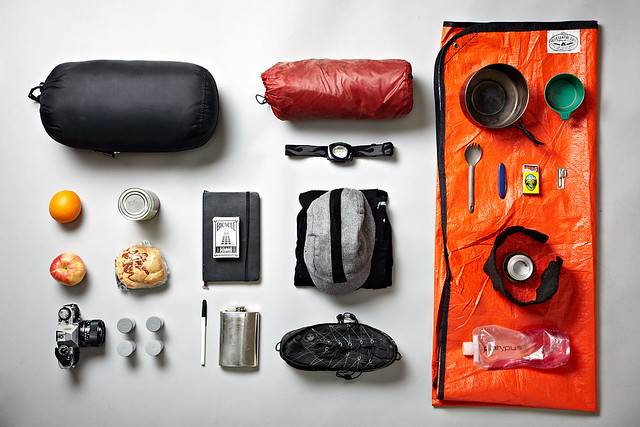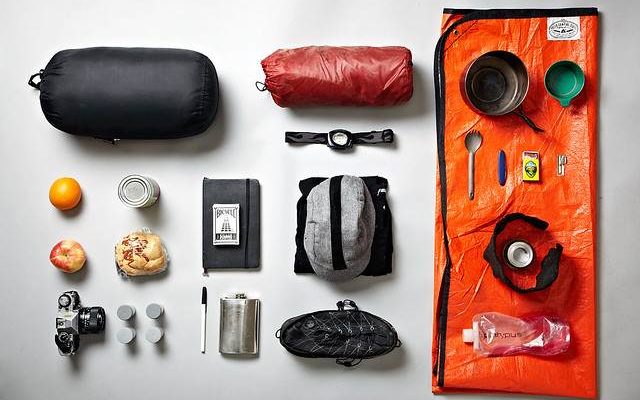Between the expansive coastal desert, the snowcapped mountains that stretch towards the sky and the verdant forests that make up the Amazon jungle, Peru is one of the most visually interesting countries in Latin America. Alongside its diverse landscape and culture is an equally varied climate.
All of this can make packing for an adventure in Peru a bit tricky. But fear not; there is an art to making sure all the essentials make it in your suitcase, while still leaving space for the knickknacks you collect along your journey.

Preparing for Peru
Peru consists of three primary regions – the coast, where the Capital is; the Andes, notorious for the Sacred Valley and Machu Picchu; and the jungle, home to one of the planet’s most bio diverse ecosystems.
The first step to making sure your suitcase contains the essentials is to have a gander at the forecasts for the regions you plan to visit.
Peru is below the equator, so seasons are opposite to those in the northern hemisphere. That said, Peru, like many countries in between the tropics, doesn’t have a distinct spring, summer, fall and winter.
Instead, it’s better to look at the seasons as split between December to March and May to October with mid-season transitions in between. Additionally, the geographic region sets the climate. The best way to approach each season is as follows:
:: La costa (the coast, including Lima): Summer (December to March) and Winter (May to October)
:: La sierra (the mountains, including Machu Picchu): Rainy (December to March) and Dry (late-May to October)
:: La selva (the jungle, including the Amazon): Heavy rains and flooding (December to March) and Light rains and dry (May through October)
The Coast and Lima
Despite the sometimes suffocating humidity, lush green landscaping and sweeping Pacific Ocean, the coastal region, including Lima, actually lies within one of the world’s driest deserts. There are two distinct seasons: summer and winter. In the summer, temperatures climb to the mid-80s (27°C) during the day and cool off to a pleasant 70°F (21°C) at night. The intensity of the sun, high humidity and lack of air conditioning in most taxies and places of business make it feel much warmer.
:: Summer Must-Haves
- Lightweight T-shirts, Shorts and Pants
- Sandals and Flip Flops
- A reusable bottle to keep hydrated
Come May, that all changes when a grey haze lingers through October. The sky is consistently cloudy and the air wet. Highs during the fall and winter months top out around 65°F (18°C) and drop to the mid-50s (12°C). While these temperatures are mild, the humidity makes it feel much colder.
:: Winter Must-Haves
- Lightweight jacket and sweaters
- Scarf or skull cap
- Shoes with traction as the sidewalks are slippery

Cusco, Machu Picchu and the Sacred Valley
As far as Cusco and Machu Picchu weather are concerned, those jackets and sweaters you used to layer in Lima will come in handy. While you won’t have to deal with the humidity, you will be at a much higher altitude. Additionally, this region of Peru is primarily split into two periods: the wet season and the dry (which coincides with the spring and summer, and the fall and winter respectively).
The wet season lasts from November to March, with the heaviest rains pouring down between January and February. During this time, temps range from a chilly 40°F (4°C) during the night to the mid to upper 60s (18°-20°C) during day.
:: Wet Season Must-Haves
- A rain slicker, jacket or poncho
- Water resistant shoes with rubber soles
- An umbrella (though these are prohibited inside Machu Picchu)
The dry season takes place between April and October (although, it does still rain). Sunshine is abundant, though temps can dip to below freezing on occasion. During the day, visitors can expect highs of around 65°-70°F (18°-21°C). Be prepared to buddle up at night though – mid to upper 30s are normal and overnight frost in not unheard of.
:: Dry Season Must-Haves
- A jacket and thick sweaters
- A scarf, gloves and a hat
- A bag to carry the layers you will take off and put on throughout the day and night
The Amazon
Called the lungs of the world, the Amazon is home to 400 billion trees, all of which need a lot of water. Trips to the Amazon during the rainy season are few and far between, as flooding makes it nearly impossible to access. Still, should you find yourself in the jungle, be prepared for near-constant downpours, a breeding ground for buzzing (and biting) insects and scorching temps – in the mid to upper 80s (30°C) just about all the time. It feels much hotter due to the humidity.
:: Wet Season Must-Haves
- Long sleeve pants and shirts (yes it will be hot, but this will protect you from insect bites)
- An impermeable jacket or slicker
- Rain boots or goulashes
It’s important to note that the Amazon is also the rainforest (keyword rain), so the skies can open up year round. That said, the dry season is a much more pleasant time to visit as temperatures are typically lower and the lack of still water and puddles mean fewer mosquitos. Temperatures generally stay in the 70s (20°-25°C). Do keep in mind though, the weather can change quickly and dramatically (temperatures dropped to 40°F (5°C) when I was there in May), so be sure to look at the forecast before your expedition.
:: Dry Season Must-Haves
- A light, long sleeved jacket
- Long sleeve pants and shirts
- Rain boots or goulashes
An Insider’s Guide to the Ultimate Peru Packing List
Luggage and Beyond
- A large suitcase with wheels or a backpacker’s knapsack (economy passengers are allowed two suit cases, weighing up to 50 pounds (22 kg) each, one carry on and one personal item; economy plus and business passengers are allowed three suit cases, weighing up to 50 pounds (22 kg) each, one carry on and one personal item)
- A daypack, backpack or cross body bag (for hiking and to hold snacks, water, jackets, etc…)
- A money belt or passport holder (to safeguard your cash, credit cards and ID)
Clothes and Shoes
- Short and long sleeve shirts made of wicking fabric
- Jeans, long pants and shorts
- Quick drying convertible trekking pants (convert from pants to shorts via a zipper)
- Sweatshirts, hoodies and sweaters
- A bathing suit
- Rain jacket, slicker or poncho
- Knit scarf, hat and gloves
- SPF hat with neck covering or baseball cap
- Tennis shoes with rubber soles
- Hiking boots with traction
- Sandals or flip flops
- A dressy outfit and shoes (for a nice restaurant or for a night out)
From Tech to Toiletries
- Cell phone (unlocked or with an international calling and data plan)
- eBook (or old school book for reading during long journeys)
- Camera and accessories (including extra batteries)
- Electronics chargers
- Bug spray (can be purchased in Peru, but it is pricier)
- Sunscreen (can be purchased in Peru, but it is pricier)
Extras
- Passport
- Driver’s license
- Credit cards and cash
- Umbrella
- Guidebooks
- A list of emergency contacts, along with phone numbers and email addresses
- Copies of your passports, driver’s license and credit cards (keep them stashed separately from the originals)
Packing Tips and Tricks
- Read over LATAN’s baggage information, which includes weigh and measurement guidelines, prohibited items and a list of potential fees
- Roll clothes to save space and prevent wrinkling
- Stuff socks inside shoes to save on space
- Bag shampoos, gels, liquids and lotions to prevent spillage
- Never keep all valuables (IDs, cash and credit cards) in the same place in case of theft
- Keep valuables in a money belt or passport holder to prevent theft
- Consider buying small toiletries when you get here to save on space
- Wear bulkier items on the plane
- Weigh and measure your bags before getting to the airport
- Consider living out of your bags for at least three days before your trip – it’ll help you realize what you forgot to pack
- Pack necessities (prescriptions, glasses, guidebooks, electronics and chargers) and at least one outfit (including underwear and socks) in your carry on in case your suitcase gets lost
- Leave space for souvenirs!!!



